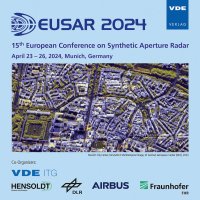The NASA-ISRO SAR Mission Overview and Current Status
Conference: EUSAR 2024 - 15th European Conference on Synthetic Aperture Radar
04/23/2024 - 04/26/2024 at Munich, Germany
Proceedings: EUSAR 2024
Pages: 4Language: englishTyp: PDF
Authors:
Rosen, Paul A.
Abstract:
The National Aeronautics and Space Administrntion (NASA) in the United States and the Indian Space Research Organisation (ISRO) are developing the NASA-ISRO Synthetic Aperlme Radar (NISAR) mission, now planned for launch in early 2024. The mission will use synthetic aperture radar to map Earth solid surfaces every 12 days, persistently on ascending and descending portions of the orbit, over all land and ice. The mission's primary objectives will be to study Earth land and ice deformation, and ecosystems, in areas of common interest to the US and Indian science communities. This single observatory solution with L-band (24 cm wavelength) and S-band (9.4 cm wavelength) imaging radars has a swath of over 240 km at 5-10 m resolution, using foll polar imetry where needed. To achieve these unprecedented capabilities, both radars use a reflector-feed system, whereby the feed aperture elements are individually sampled to allow a scan-on-receive capability at both L-band and S-band. The project has completed its final stage of integration and test in India. Launch is planned for Spring 2024. The launch vehicle is ISRO's GSLV Mark Il, and the launch will take place at the Satish Dhawan Space Centre in India. This talk will describe the mission, the measurements, the status at the time of EUSAR 2024, and the plans for commissioning and early operations.


